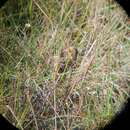en
names in breadcrumbs


The females utter a series of low-pitched, "hoo" notes that resonate.
Communication Channels: acoustic
Perception Channels: visual ; tactile ; acoustic ; chemical
Hottentot buttonquail are not listed by either the IUCN or CITES.
CITES: no special status
IUCN Red List of Threatened Species: least concern
There are no known adverse affects of hottentot buttonquail on humans.
As a result of their food habits, these buttonquail may help control weed and insect pests.
Positive Impacts: controls pest population
Hottentot buttonquail have an impact on the prey and plants they eat.
Hottentot buttonquail eat grasses, weeds, insects and their larvae, and other invertebrates.
Animal Foods: insects; terrestrial non-insect arthropods
Plant Foods: leaves
Primary Diet: omnivore
Hottentot buttonquail range from Ghana and Cameroon east to Uganda and Kenya and south to the northeastern part of Angola and Cape Province (Johnsgard, 1991). Some subspecies may range as far west as Sierra Leone and as far north as Sudan (Clancy, 1967). These birds are migratory and winter in the Sahel zone just below the Sahara (Johnsgard, 1991).
Biogeographic Regions: ethiopian (Native )
Hottentot buttonquail are found in grasslands and on the fringes of marshes where the grass is less dense. They are also found on scrub lands with thin stands of grasses and low bushes as well as fallow fields and gardens (Clancy, 1967). These buttonquail are adapted to arid regions (Johnsgard, 1991).
Terrestrial Biomes: savanna or grassland ; scrub forest
Wetlands: marsh
Other Habitat Features: agricultural
We do not have information on lifespan/longevity for this species at this time.
On average, female hottentot buttonquail are 15 cm long, and males are 14 cm long. They weigh between 40 and 62 g. Females are black above with rufous mottling. Most of the feathers of the crown are back and edged in white. The rump and upper tail feathers are black. The rest of the head, the sides of the throat, and upper breast are buff, while the feathers capping the wings are a golden buff color. Feathers on the sides of the neck and breast are barred with black and white. Wing coverts are brownish-black and the outer primaries have a partial buff margin; the wing feathers are mottled with light red, buff and white, and barred with black. Wing tips are white. The lower breast and abdomen are buff grading to white. There are heavy blackish-brown spots on the breast, over the sides of the body and on the flanks.
Range mass: 40 to 62 g.
Range length: 14 to 15 cm.
Sexual Dimorphism: female larger
Other Physical Features: endothermic ; bilateral symmetry
We do not have information on predation for this species at this time.
All buttonquail are polyandrous.
Mating System: polyandrous
Breeding occurs during or just after the rainy season. Mating occurs in South Africa from October to January, in Zimbabwe from September to February, in Malawi in April, in Nigeria in December and January, and in Kenya from May to July and October (Johnsgard, 1991).
The nest is a scrape (Clancy, 1967) or a scant pad of grass blades on the ground, under the canopy of a green or dried grass tuft (Johnsgard, 1991). Clutch size is two to six eggs; males incubate for 12 to 14 days (Johnsgard, 1991). The eggs are pyriform in shape, yellowish with light and dark brown speckles, and are 23 to 25 mm by 17 to 20 mm (Clancy, 1967).
Breeding season: Breeding occurs during or just after the rainy season.
Range eggs per season: 2 to 6.
Range time to hatching: 12 to 14 days.
Key Reproductive Features: iteroparous ; seasonal breeding ; gonochoric/gonochoristic/dioecious (sexes separate); sexual ; oviparous
Male hottentot buttonquail incubate the eggs for 12 to 14 days.
Parental Investment: no parental involvement; pre-hatching/birth (Protecting: Male)
The Fynbos buttonquail (Turnix hottentottus) is a bird in the family Turnicidae formerly considered conspecific with the black-rumped buttonquail (Turnix nanus).[2] There are no subspecies.[3]
Several authorities still refer to this species as the Hottentot Buttonquail, however, as the word "Hottentot" is an offensive term for the Khoisan people, there has been a movement to change the vernacular name.[4] The new name highlights the specific habitat requirements of this species in the Fynbos of the Cape Floristic Region.
The species is endemic to South Africa and is found along the south coast from Cape Town to Algoa Bay in Eastern Cape province where it occurs in mountain fynbos where vegetation is relatively sparse.[5] A 1994 survey resulted in an estimate of c.310-420 birds in 25 square kilometres (9.7 sq mi) of montane fynbos habitat in Cape of Good Hope Nature Reserve. The lack of records suggest that this may be an overestimate, and extrapolation of a much lower density estimate from a 1990 study would result in a total population across the Western Cape of just 400 birds (Lee 2013). The total population is therefore uncertain, but given the lack of recent records is assumed to be very small. It is precautionarily estimated to lie within the band of 250-999 mature individuals, with no more than 250 individuals in the largest subpopulation.[1]
The Fynbos buttonquail (Turnix hottentottus) is a bird in the family Turnicidae formerly considered conspecific with the black-rumped buttonquail (Turnix nanus). There are no subspecies.